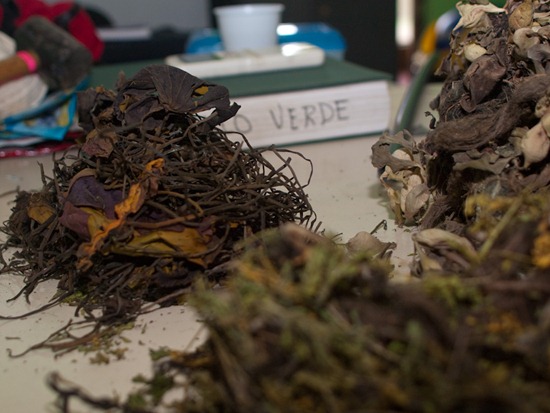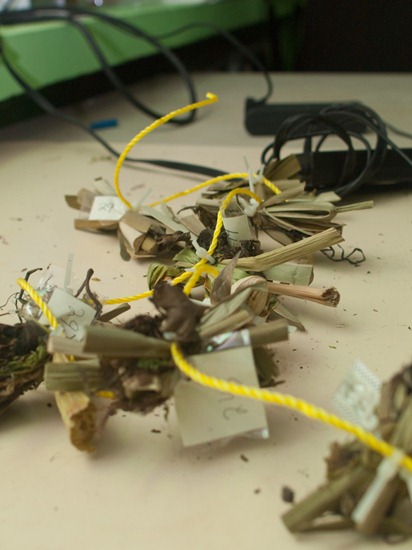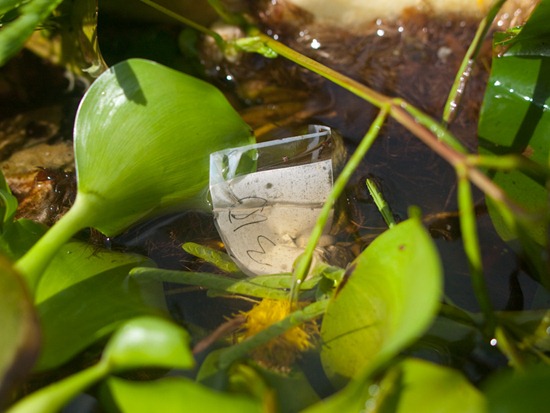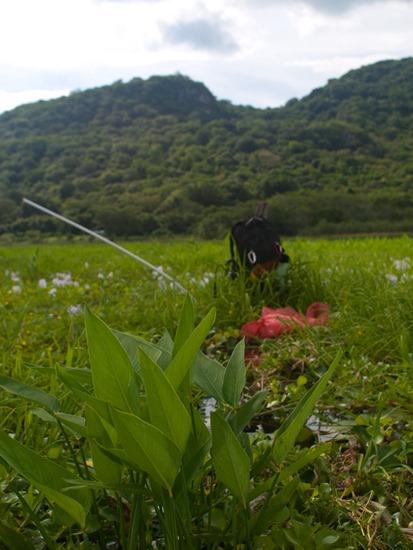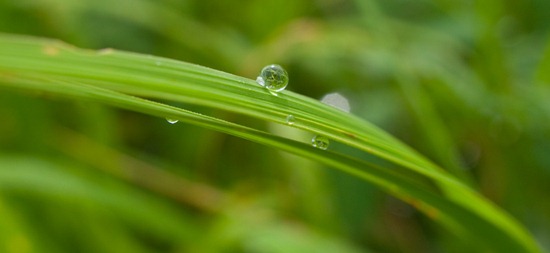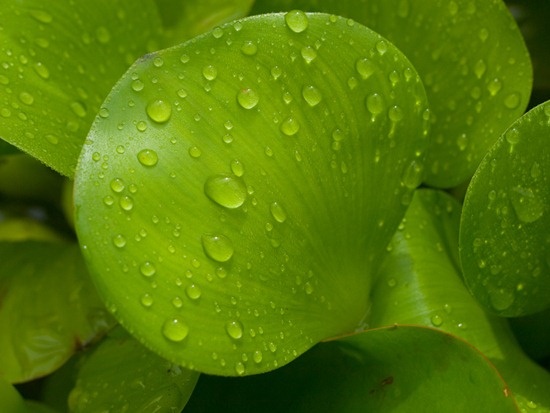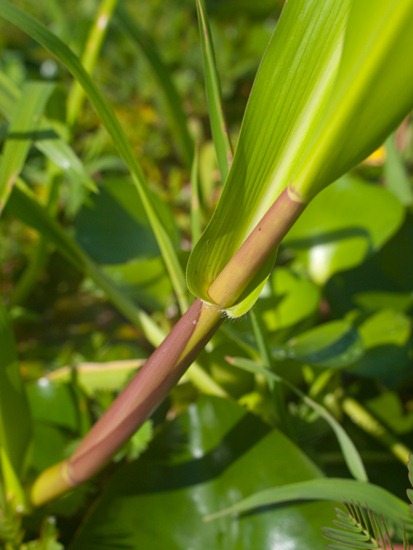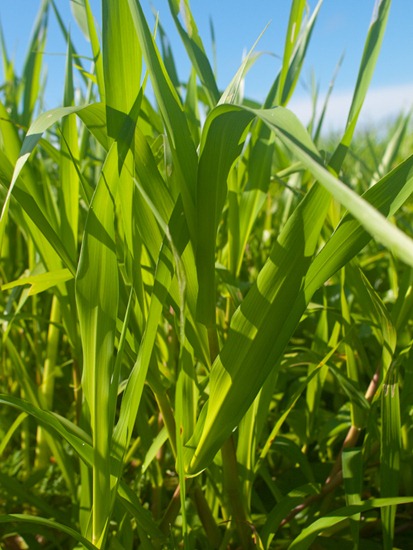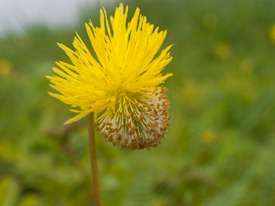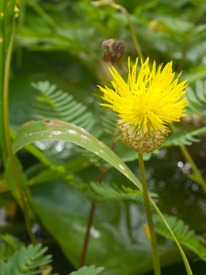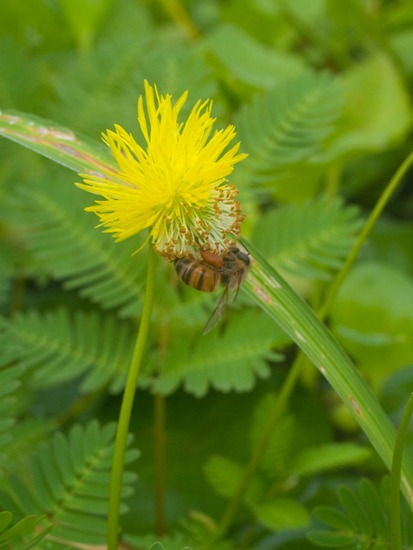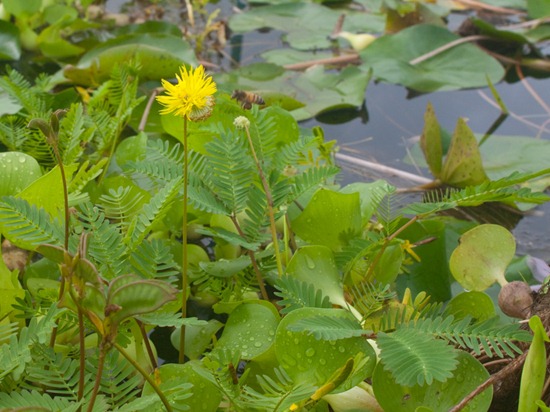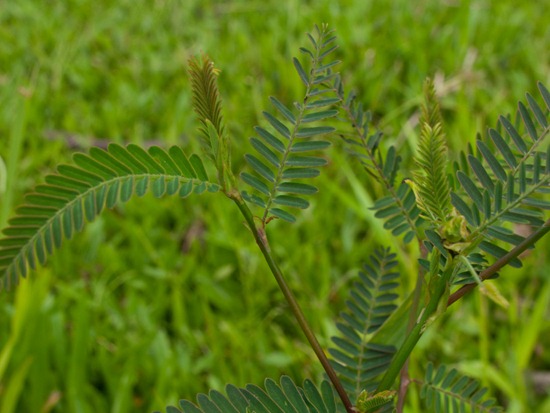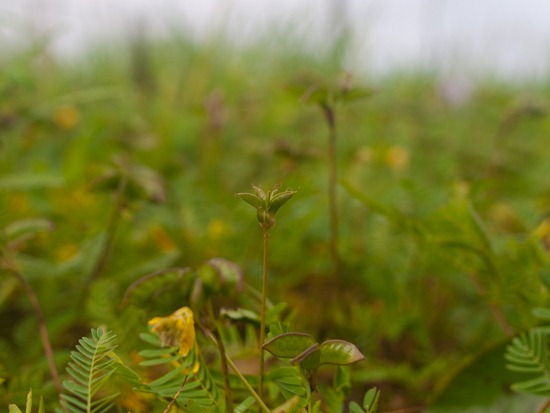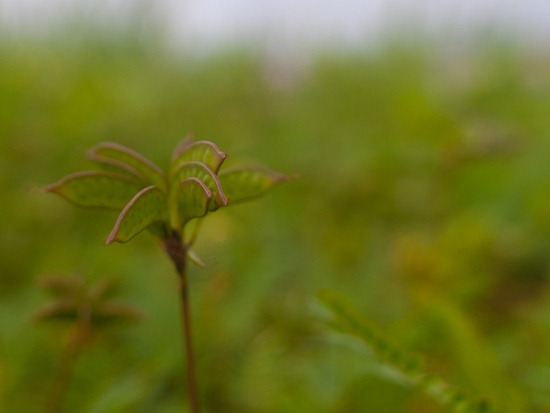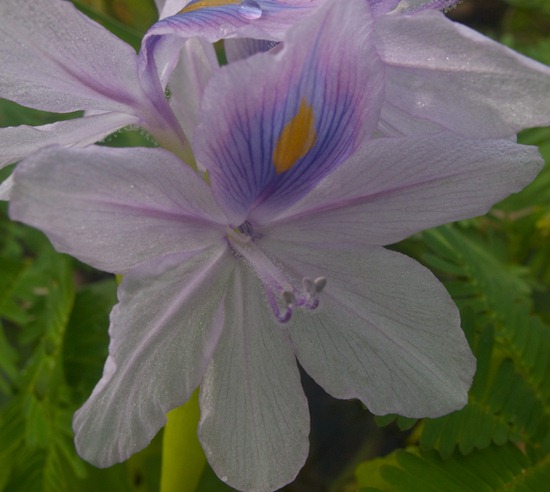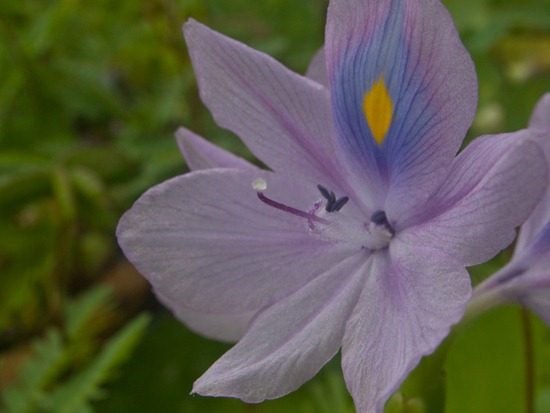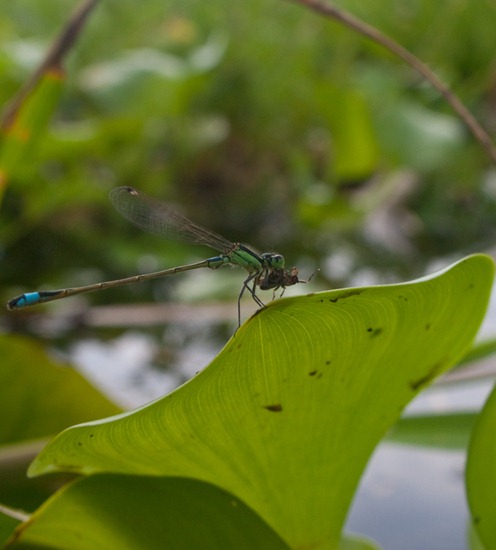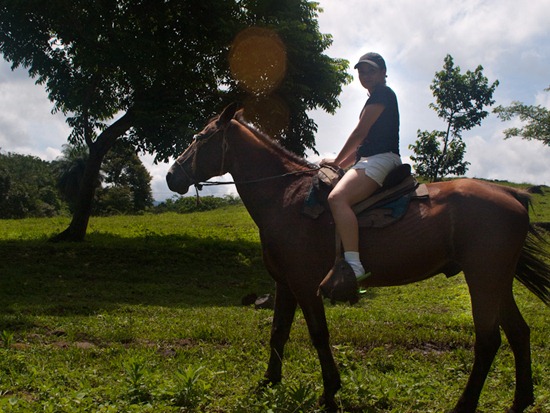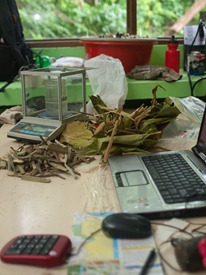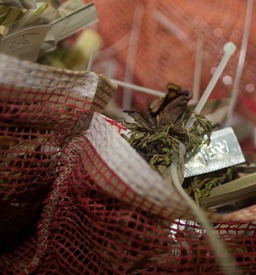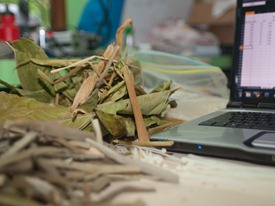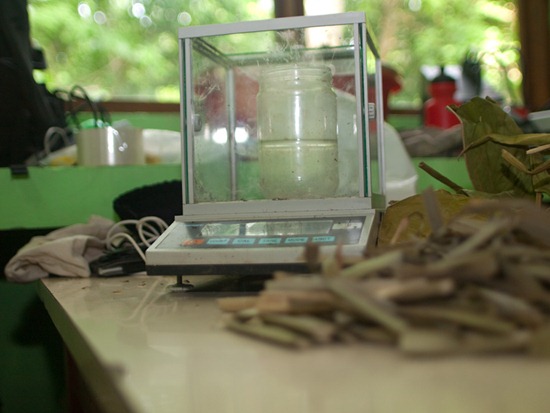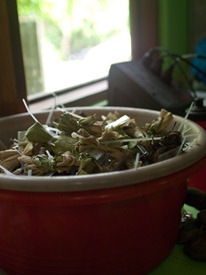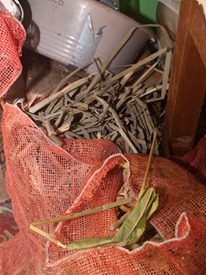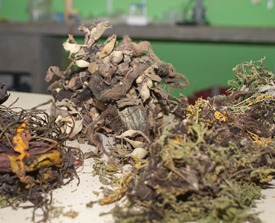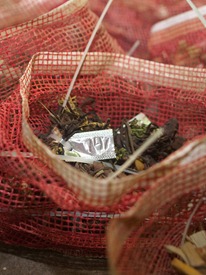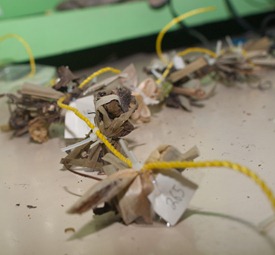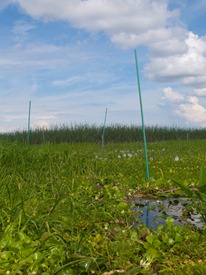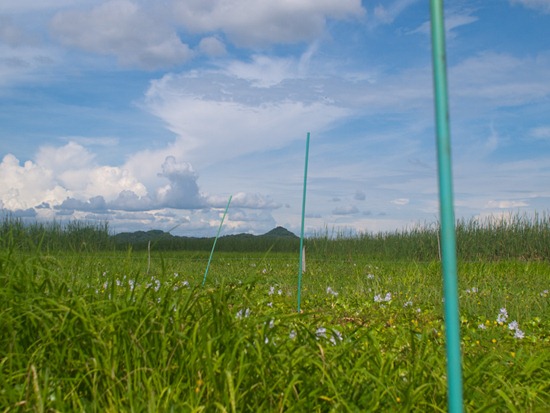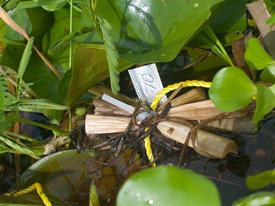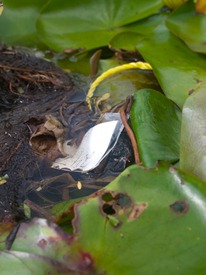During a fog-covered morning in the wetland, the plants were covered in droplets of water. I’m still trying to identify the Poaceae.
Hymenoachne amplexicaulis
A common, floating grass, H. amplexicaulis is identified by (and named for) the ear-lobes formed at the base of each leaf. It is by far the most abundant grass within the Palo Verde wetland, and is also the most easily identified, at least in my experience.
Inter-twined mats are extremely difficult to pass through, especially since cutting through them with a machete is nearly impossible.
Neptunia prostrata flower
Neptunia plena
Neptunia plena is the other species in the genus Neptunia that is found around here. I haven’t seen it in Palo Verde, but it was common here.
Wetland Azolla
Neptunia fruit
Heterostyly in Eichhornia
Eichhornia crassipes is another plant exhibiting heterostyly (genetically determined differences in length of the flower’s pistil and stamens between individuals), but there are supposedly three morphs in the species (tristylous). I’ve only encountered the two shown below, but they are frequently found nearby one another (within a few meters).
Damsel fly
Areli
I don’t know how to spell her name (maybe it’s Arelli, Arelly, Arely or something completely different), but she’s a Nicaraguan women assisting Mahmood with his frog traps. She’s currently away, but will be returning next week for more work. I believe she wants to go to graduate school, eventually, but that’s also hard to tell because all of my conversations with her have been in Spanish. I’m still learning, but she’s been helping quite a bit.
Diversity effects on decomposition
Here’s a big post illustrating a decomposition assay I recently set out in the wetland. I created bundles of dead, dried macrophytes in various mixtures, attached them to 3-m of nylon rope and tied the rope to posts in the wetland. I’ll be collecting a sample soon and may post another sequence.
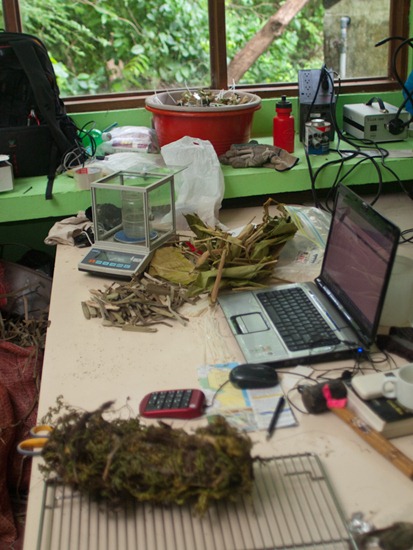
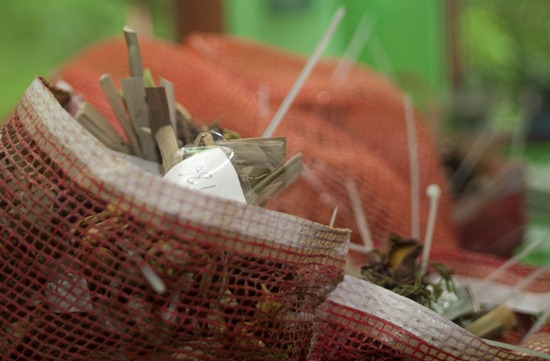
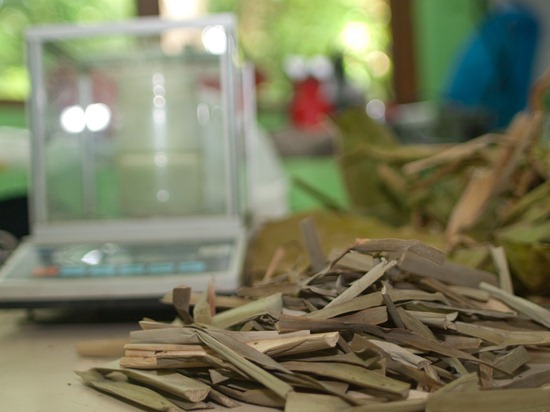
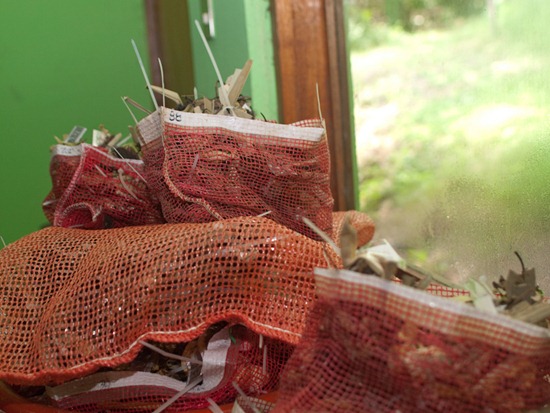
|
|
|

